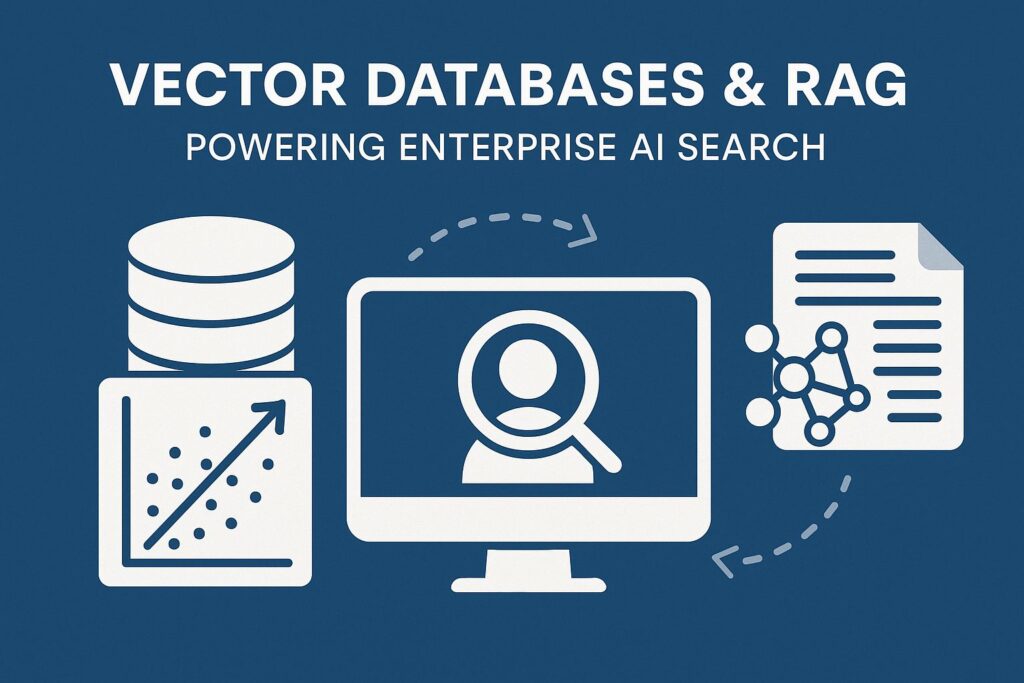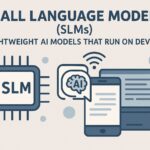In 2025, enterprise search is no longer just about matching keywords. With the explosion of unstructured data and AI-driven applications, businesses need smarter ways to find, retrieve, and utilize information. That’s where Vector Databases and Retrieval-Augmented Generation (RAG) come in. Together, they are redefining AI-powered search for modern enterprises.
What is a Vector Database?
Traditional databases store information as structured tables with rows and columns. But AI models, especially large language models (LLMs), represent information as vectors—mathematical embeddings that capture the semantic meaning of text, images, or other data types.
A vector database is designed to store, index, and search these high-dimensional vectors efficiently. This allows AI systems to find semantically similar content, even if it doesn’t match exact keywords.
What is RAG (Retrieval-Augmented Generation)?
Retrieval-Augmented Generation (RAG) combines the power of:
- Retrieval: Fetching relevant information from a database or knowledge base.
- Generation: Using AI (like GPT or LLaMA) to generate responses based on the retrieved information.
RAG enables AI systems to provide accurate, up-to-date answers by grounding AI-generated content in real enterprise data, bridging the gap between knowledge and reasoning.
How Vector Databases & RAG Work Together
- Embedding Data: Documents, FAQs, and records are converted into vector embeddings.
- Storing in Vector DB: These embeddings are stored in a vector database (e.g., Pinecone, Weaviate, Milvus).
- Query Embedding: When a user asks a question, the query is also converted into a vector.
- Semantic Search: The vector database finds the closest embeddings to the query.
- RAG Generation: The AI model generates an answer based on the retrieved content.
This combination enables enterprise-grade AI search that is fast, accurate, and context-aware.
Benefits for Enterprises
- Enhanced Search Accuracy: Finds relevant information even with vague queries.
- Knowledge Management: Unlocks insights from unstructured data like PDFs, emails, and reports.
- Faster Decision-Making: Employees can quickly access critical information.
- AI-Driven Automation: RAG can generate reports, summaries, and recommendations automatically.
Popular Tools in 2025
- Vector Databases: Pinecone, Milvus, Weaviate, Qdrant
- RAG Implementations: LangChain, LlamaIndex, Microsoft Semantic Kernel
- LLM Models: GPT-4, Claude, LLaMA 3
These tools make it easy for enterprises to implement semantic search, knowledge retrieval, and AI-driven insights without building everything from scratch.
Challenges
- Data Privacy: Sensitive enterprise data must be secured.
- Cost: Storing and indexing large-scale vectors can be expensive.
- Model Accuracy: AI models need fine-tuning to generate reliable outputs.
- Integration: Connecting RAG and vector databases with existing enterprise systems requires planning.
Future of AI-Powered Enterprise Search
By 2030, RAG + Vector Databases will become the standard for enterprise knowledge systems:
- Real-Time, Contextual Search: Instant answers from multiple data sources.
- Adaptive Knowledge Bases: Systems learn and update continuously.
- AI Assistants: Enterprise AI agents powered by RAG providing actionable insights.
Enterprises that adopt vector databases and RAG now will have a competitive edge in productivity, decision-making, and innovation.
Conclusion
Vector Databases and Retrieval-Augmented Generation are transforming enterprise AI search in 2025. By combining semantic understanding with AI-powered generation, businesses can unlock the full potential of their data—making search smarter, faster, and more reliable.
For enterprises, adopting these technologies isn’t optional anymore—it’s essential for staying ahead in the AI era.



